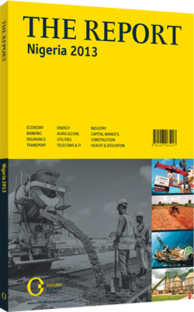Settling in: The partial completion of the privatisation process brings a new set of issues to the table
Following the handover of the Power Holding Company of Nigeria’s (PHCN) assets, talks will now move from the bidding process of the PHCN’s successor companies to the next set of challenges: what the possible roadblocks could be going forward, and what kinds of strategic decisions are the new owners likely to make? The finance and other types of foreign investment secured by the new owners will be important details for equipment vendors in tailoring their strategies to approach these new partners.
CHALLENGES: Among more immediate concerns is the creditworthiness of the new conglomerates in charge of generation and distribution. All but one of the 15 bid winners met the August 2013 deadline to make final payments as part of the privatisation process, but the capital upgrades required by the plants mean the process is costly and demands appropriate financing to be successful. “Some are already asking for equipment on credit as well, so these new companies are not cash-rich,” said Hicham Mansour, managing director of Tofa, a Lagos-based company focusing on power-sector vending and services. “They are thinking about making money, not about building assets.”
Pension obligations and leftover liabilities from PHCN have also proved challenging. Winning bidders for distribution companies had been lobbying for a month-long extension of the payment deadline, citing concerns about whether legacy PHCN debts had been fully moved off the successor companies’ balance sheets. Allegedly, the funds raised from privatisation will be used to fulfil the commitments to PHCN staff. However, while some former employees are expected to be retained, it is likely that the new owners will proceed with smaller staffs. The formal termination of all PHCN employees triggered labour-union protests and months-long negotiations on the value of pension packages to be paid. The issues were settled by June 2013 to end possible setbacks to the process from organised labour. As of late September, workers’ payments were being progressed, according to the Federal Ministry of Power.
GEOGRAPHY MATTERS: Even though the initial bidding round is complete, there is still significant room for participation. New generation and distribution facilities continue to be an option. Distribution companies, for example, are not prevented from generating on their own on a small scale. Power plants with a capacity of less than 1 MW are not regulated and would provide more than enough power for communities that are currently without access. Under consideration are island systems to serve rural areas, industrial clusters for far-flung towns and villages for which grid service could be comparatively expensive and inefficient.
Distribution companies that can service a large chunk of their customers through an island system can effectively insulate themselves from transmission-related risks. “For those little pockets of communities that are stranded, just 1-2 MW are enough,” Uche Okoro, a special assistant of research and strategy at the Nigeria Electricity Regulatory Commission, told OBG.
PIPELINE: The expected rise in demand for inputs, offers scope for investments in gas supply as well, particularly in light of the planned locations of both large generating facilities and island plants in the middle belt and north of the country. The inland states are far from Nigeria’s offshore gas deposits, and most of the country’s power plants are in the south-east, near the gas pipelines, or in and around Lagos in the south-west, close to the greatest concentration of customers. The grid has traditionally been used to bring power north.
However, a pipeline to the north could be more efficient in terms of gas supply, with less risk of leakage than a grid. “Transmission lines passing through states can be difficult,” said Tomasso Casara, commercial manager at oil and gas servicing firm Saipem Contracting Nigeria. “It is easier to maintain a pipeline, so it may be sensible to pipe gas up to the north and build power plants there.” There would be additional challenges to consider – crude pipelines are often subject to sabotage and bunkering – but given the lack of a nationwide pipeline network, there is room for growth.
You have reached the limit of premium articles you can view for free.
Choose from the options below to purchase print or digital editions of our Reports. You can also purchase a website subscription giving you unlimited access to all of our Reports online for 12 months.
If you have already purchased this Report or have a website subscription, please login to continue.

